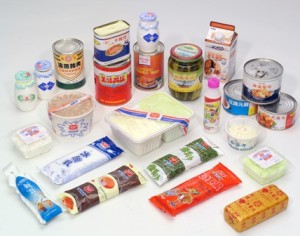Processed Food Industry in China
Processed Food Industry in China: A Rise of Imported Food
As an ancient country rich in its culture, Chinese people has been thought highly of the culture of diet and food. China’s food industry has developed rapidly these years, however, in the eyes of some westerners, they may still have a small picture of it. This article is aimed to offer the latest shot of the processed food industry in China.
Imported Food and Processed Food Industry in China
While in the today’s China, the category of food brands are abundant not only the local ones but also with a huge variety of many imported products. It is generally referring to food from other countries and regions, including the food which is produced in other countries and regions and packaged in China. To some degree, Chinese consumers prefer the imported products than the local ones due to the impression of the product’s reputation of foreign brands and dismay of some local food safety issue. Quality control specialist Asia Inspection said that 48% of the “several thousand” inspections, audits and tests conducted in China in 2014 failed to meet the requirements stipulated by some of its clients -Western food trading companies and retailers. Recent food safety scandals have overshadowed the enjoyment of eating, by putting people’s health at risk, which has irritated most consumers and cause the popularity of healthy and imported food products. According to the statistics of Daxue Consulting, the import of food industry in China was $8.83 billion in 2013, including $5.19 billion of dairies, followed by $2.07 billion of sugar. From January to August in 2014, the import of food industry in China was $7.38 billion, including $5.34 billion of dairies, followed by $910 million of sweet products.
Research and Development in Processed Food Industry in China
Whatever the variety of the type of production, there is a bottleneck in research and development for the innovation of new kind of products. It also will be a tendency for the future of China processed food industry. Chinese producers similarly pay very little attention to creating and make new products. Indeed, a young college graduate in China who majors in Food R&D says that he has to struggle to find a job that well-matched his major. According to the data in the employment direction among Food R&D major graduates, most of these students get their jobs through the transition from marketing officer to reserve researchers.

Marketing and Distribution become the Key to Success
For the thirst of marketing workers, we can infer that in China’s market, much attention on marketing and advertising has been paid to win more segmentation. Also, some data shows that most of the products that have no difference in design and packaging show a difference in sales value when having a Chinese celebrity in the add. In addition, another factor induced the difference in sales amount of likewise products is where the products are sell. A Chinese customer can easily purchase different kinds of food products in a supermarket, but he can only find one or two kind are in the 7-11 convenience store or in another brand such as Family Mart. The specificity of China, with the 24-hour-work store, even opened during the national holidays and that are very popular in big, convenient stores are vital to some giant producers.
To sum up, the main battlefield of the producers are located in Chinese Marketing and Distribution strategy, which could be attributed to the less reliable legal system in intellectual property rights and the trend of copying the competitor’s new products to save the R&D expense. In another word, it is more effective to hire a business agency than a team of researchers.
Contact us at dx@daxueconsulting.com for more insights about China’s market.
Follow us on our Social Media, here is our latest infographic posted in Twitter:
What are the main types of pine nuts available in China, and why? https://t.co/Ww8fGn73gr pic.twitter.com/dwphayATb1
— Daxue Consulting (@DaxueConsulting) December 30, 2015







![[Infographic] China Football Industry: Trends and Opportunity](../wp-content/uploads/2016/12/Screen-Shot-2016-12-13-at-10.15.39-AM-150x150.png)







